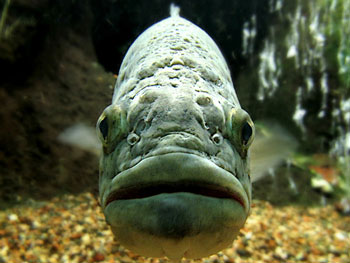The Mouth: Fishing for Striper on the Mouth of the Merrimac
May 28, 2013Sinkers 101
May 30, 2013Although fishing can be relaxing and fun, it can also be dangerous! Especially when reeling in more toothy types of fish, like the bluefish. Bluefish have a large range in size, starting at about seven inches, and can get up to forty pounds (although it is rare to catch one above twenty). Although some consider bluefish a bait fish for others like shark and tuna, bluefish can be excellent eating, too, especially the ones smaller in size.
However, if you are reeling in a smaller blue, do not be fooled by its less-than-intimidating length. Even the tiniest bluefish can do damage to your fingers, and with their ability to see well both in and out of the water, they can prove a tough adversary when it comes time to catch and release. (Or keep, depending on how your day has been going.) Bluefish have one row of uniform chompers, and every one is razor-sharp. So, regardless of if you are on boat or wading in water, keep your fingers intact and brush up on some basics of removing hooks when landing an especially aggressive fish.
Let the leader be your guide! A leader has many functions, mainly to help protect your line, your plugs and lures, and also to ensure your fish stays on the line. It can also help keep you safe. Use your leader as a point of contact when reaching down for the fish. Slide your hand down the leader and grab the fish at the back of the head, heading for the gill plate. Be careful: If your leader is too thin, it could slice your hand, too!
Once you’ve got the fish by the head, firmly place your fingers in the gill plate. By holding the fish like this, not only are you forcing it to relax, but you are handling it in a way that allows for safe re-entry into the water. If you are on a boat, you can pin the fish down with your knee. If you are in water, have your pliers handy and tuck that rod under your elbow.
Use pliers to safely remove the hook from the fish. Grab the shank of the hook with the pliers and gently rotate the hook out. No-barb hooks will ensure easier removal.
By following these simple steps you’ll make sure both you and the fish stay safe to fight another day.

